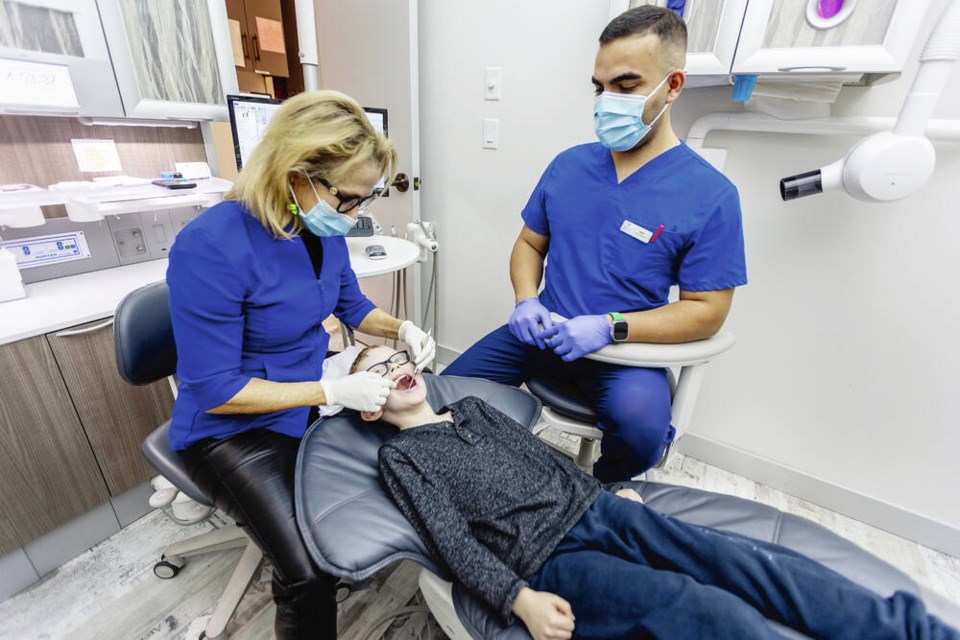A Nanaimo mother is speaking out about opioid-prescribing practices after her teenage daughter went to a hospital ER with dental pain and was given Dilaudid, a potentially addictive opioid.
The 17-year-old, who had recently had a root canal, drove herself to Nanaimo Regional General Hospital on the evening of Sept. 13, with her parents’ permission.
The teen was given local freezing and eight one-milligram tablets of hydromorphone, also known as Dilaudid. The opioid analgesic, used for relief of moderate to severe pain, is about two to eight times more potent than morphine and about 25 to 30 times more potent than codeine.
The teen’s mother questions prescribing an opioid to a teen who was alone and has a history of mental-health challenges and a prescription-medication overdose two years ago.
“Why does she need such a potent and mood-altering drug to alleviate her toothache after already having had freezing administered?” asked her mother, a 41-year-old hairdresser who asked to remain anonymous to protect her daughter’s privacy.
The teen first tried over-the-counter medication, and while she was looking for pain relief from the hospital, she wasn’t looking for narcotics, her mother said.
“Thank heavens we are so open with our children about the dangers of these drugs and our personal history with this type of medication, that my daughter knew enough to inform me about what she had been given,” said the mother, who is also frustrated that she wasn’t contacted.
“Wouldn’t freezing have been enough until she could see her dentist in the morning?”
The teen’s mother said she has her own history of prescription drug addiction. As a youth, she became addicted to Percocet, which contains oxycodone, after she was prescribed it by a family doctor for pain related to endometriosis.
Her then boyfriend, the teen’s father, also became addicted. The mother and father have been clean for 13 and 12 years, respectively.
“As soon as I walk into any clinic, I say I don’t want any narcotics,” said the teen’s mother, who questions whether prescribing trends have changed since the opioid crisis was declared a public health emergency in 2016.
Years ago, the teen was prescribed medication for anxiety and depression that made her symptoms worse — even “made her suicidal,” said her mother. The teen overdosed on the medication in 2021, after which she received counselling and had ADHD diagnosed, and she is now managing her symptoms.
“I am explaining the circumstances, because this was the same emergency room that has just sent my young daughter home with this highly addictive narcotic medication without hesitation,” said the mother. “Why?”
Island Health said it can’t comment on individual patients or the care they receive due in part to privacy laws, but in a statement, it said clinicians ensure patients are getting “the right medications, in the right amount, at the right time” while informing them of the risks and benefits of their medication treatment options.
Medications are given or prescribed based on clinical judgment, and informed by an assessment of the patient and their medical history, said the health authority.
“In general, when a patient is being treated for pain management in the emergency department, a physician will consider information from the patient on how they have managed their pain at home,” said Island Health. “If over-the-counter medications have not been sufficient to manage a patient’s pain, other options may be explored.”
Urban Smiles dentist Rachel Staples said opioids are generally not effective with tooth pain and can be addictive even in small quantities. The best option for tooth pain is Tylenol and ibuprofen taken together, said Staples.
“It’s pretty well known throughout the dental community that dental pain is a very specific type of pain and it doesn’t really respond well to any kind of narcotics,” Staples said in a phone interview. “The best solution is a steroid combined with ibuprofen and Tylenol, or just ibuprofen and Tylenol.”
Staples, whose son Elliot Eurchuk died in 2018 of a toxic drug poisoning after he became addicted to prescription pain medications following several serious sports injuries and related surgeries, says in almost 30 years of dental practice, “I have never prescribed any kind of narcotic.”
She said from her experience, surgeons are slowly coming around to limiting opioid prescriptions, but pharmacists are the real gatekeepers, limiting the amounts dispensed and calling back prescribers with suggested lower amounts.
“Clearly there needs to be more education around dental issues,” Staples said. “A long-acting local anesthetic is a far better option to get patients comfortable and get them some rest along with maybe a mild steroid.”
Staples said a prescription for eight one-milligram pills at least indicates the physician was limiting the amount dispensed to about two days worth of medication.
A paper called Prescribing and Dispensing Drugs on the website of the B.C. College of Oral Health Professionals, which regulates 16,000 oral health professionals including dentists and dental hygienists, says “over-prescribing of opioid pharmaceuticals by health care professionals is a problem.”
Guidelines suggest dentists question if there is a reasonable non-narcotic alternative to opioids. If they do prescribe opioids, they’re asked to consider the minimum dose and number for pain control in the immediate post-operative period.
“We recognize that B.C.’s overdose crisis is ongoing,” the college said in a statement. “There are harms associated with pharmaceutical opioids, and the expectation for prescribers is that they will use evidence-based best practices for pain care.”
As for the teen’s mom, she’s convinced not enough clinicians are getting the message.“This practice of issuing narcotics to teenagers needs to change.”



